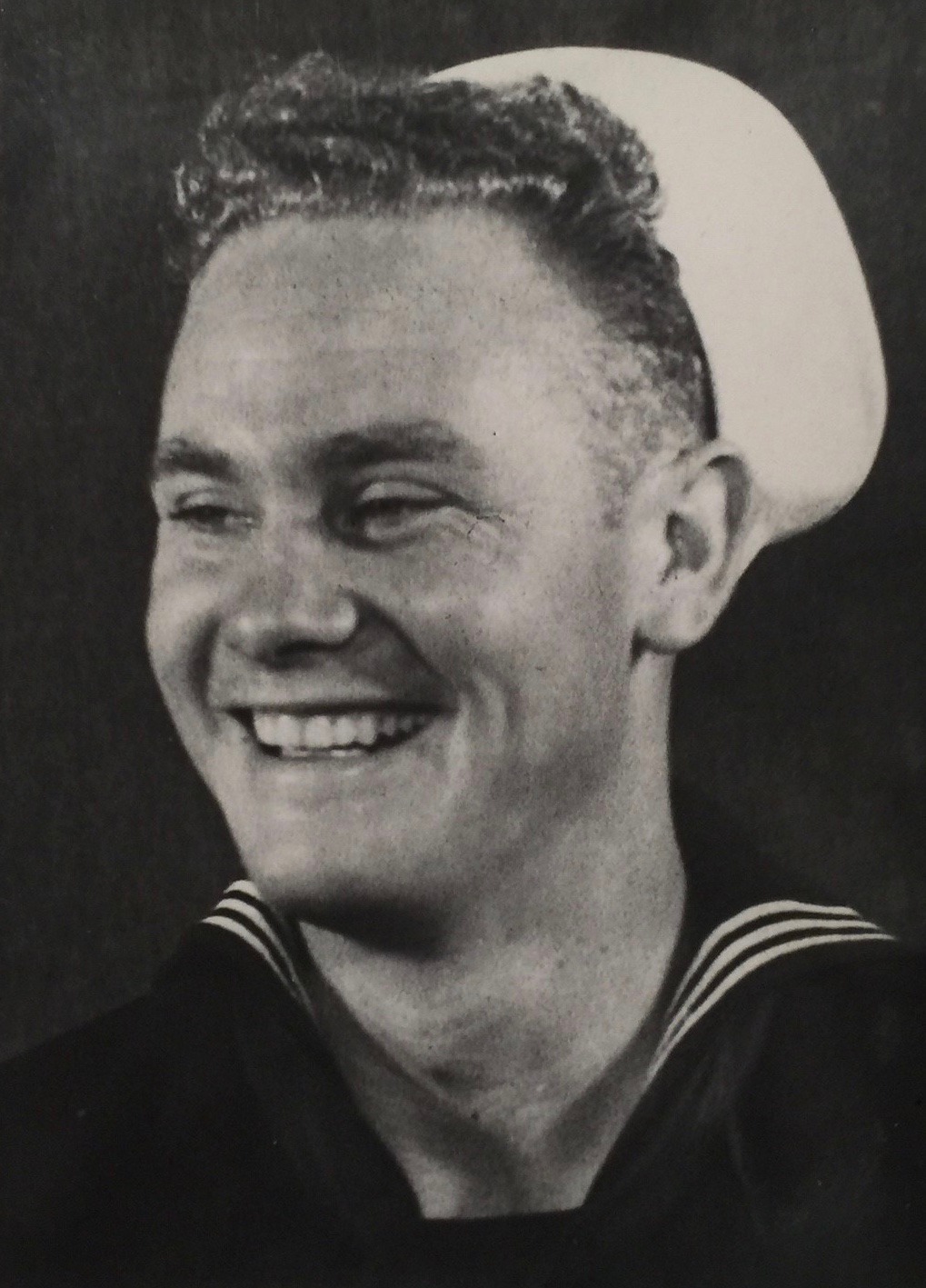
When Kathleen Biers was just a baby, her older brother, George Sanford Hollowell, died at Pearl Harbor at the age of 21. He was a coxswain on the U.S.S. Arizona when he was killed in the Japanese attack, Dec. 7, 1941.
George enlisted in the Navy before she was born, so she has no first-hand memories of the brother for whom she was named (she is Georgia Kathleen, the Georgia for her brother).
But she has memories nonetheless…memories stoked by her mother and constantly refueled by the trove of precious letters, photos and newspaper clippings that her mother kept and passed on when she died.
For many years, the family believed that George went down with the ship, but more recently, they learned that “he was thrown against the bulkhead and suffered a head injury which killed him immediately.” George’s body was identified when it was removed from the ship, but the deposition of it is not clear, a common situation for many families who lost loved ones in the bombing of Pearl Harbor. Most likely, he was buried in one of the “unknown” gravesites at the Punchbowl cemetery. Kathleen, who goes by Kathy, is hopeful that his gravesite will one day be identified by DNA.
Although Kathy, a residential interior designer, never knew her brother, the devotion of her mother, Loreana Hattie (Bowen) Hollowell McMillen, kept his memory alive.
“He was always honored in our home,” Kathy recalls.
In fact, as a teenager, she agreed to serve as the head of an Arizona fundraising drive for the creation of the USS Arizona Memorial at Pearl Harbor. Kathy travelled to Pearl Harbor with other Arizonans to meet with the Pacific War Memorial Commission.
“It was so important to my mother, and because of that, when the Navy asked, I couldn’t say no,” she says. “It was an honor to me.”
Although the trip had a serious foundation, it was also a short reprieve from studies and part-time work for the Phoenix College freshman—and a bit of an adventure. She took her first plane ride on a Navy transport plane to the meeting and was housed at the base in Honolulu, where — between meetings — the soldiers taught her to play pool. Ultimately, the Arizonans’ meeting with the Commission was successful, and Kathy represented the fundraising campaign all over the state.
George was born July 9, 1920 in Phoenix. HIs father, George Arthur Hollowell, was a gardener and his mother a homemaker. Apparently, young George had always wanted to be in the Navy. Kathy has a picture of him as a young child, dressed in a “Navy uniform.” A good student, he enlisted in June 1939 immediately after graduating from Phoenix Union High School. At 18 years old, he was eager to serve his country. He also was devoted to his family and had always wanted a baby sister. He wrote loving letters frequently to his mother, always telling her not to worry and asking about his namesake.
“He wrote mother nearly every two weeks,” Kathy recalls. “He sent Mother’s Day and Valentine’s cards, a telegram at Thanksgiving and photos from all their special events on board. I even have a tablecloth from their Christmas dinner.”
She has the violin he played as a youth in Phoenix. She has humorous photos that prove the men on the USS Arizona had some fun before they entered the war zone. She has his small leather-bound photo book, with “USS Arizona” stamped on the cover. She has original letters from him. She has the many medals, including the Purple Heart, that George earned upon his death.
And Kathy also has the letter that her mother wrote to George on Dec. 8, 1941, unaware that he had died. It’s stamped by the Post Office: “undeliverable.”
In part, it reads:
“Dearest Boy, I am writing you to let you know my thoughts and love are with you and all the boys there. We are praying for your safety and victory thru all this. Whatever comes, George, I know you can face it … maybe with fear but like the man you are. Even with the worry there is still pride that my boy is a man and taking his place there. If we at home can be worthy of you boys is all I ask.
“John (a younger brother) is as bad as I am about the radio. We have not missed a thing since Sunday morning. It seems like a nightmare yet. If I were a man I would be there with you. Keep your faith in your heavenly Father and I thank him from my heart that you gave yourself to Him before you joined the Navy.”
George’s letters are equally a mix between concern and bravery. For example, on April 5, 1941, he wrote, “Things are pretty bad across the ocean but I don’t think there is a need for us to be alarmed yet for a little while anyway… We don’t know how long we’ll be out here. If you read the newspaper, you will know as much as I do about what goes on.”
Showing a visitor the scrapbooks, letters, newspaper stories, photos and mementos piled on their kitchen counters one Saturday morning, Kathy and her husband, Bill, agreed that Georgia’s mother’s devotion to George gave them a gift, bringing the brother who died on the USS Arizona alive to them.
It’s a gift Kathy intends to pass on to her children.
Sources: Special thanks to Athia Hardt, a former newspaper reporter in Phoenix, for interviewing Kathleen Biers and for writing this profile. Other sources include: Arizona birth record; Census; Navy muster roll. This profile was researched and written by Bobbi Jo Buel on behalf of the U.S.S. Arizona Mall Memorial at the University of Arizona.
